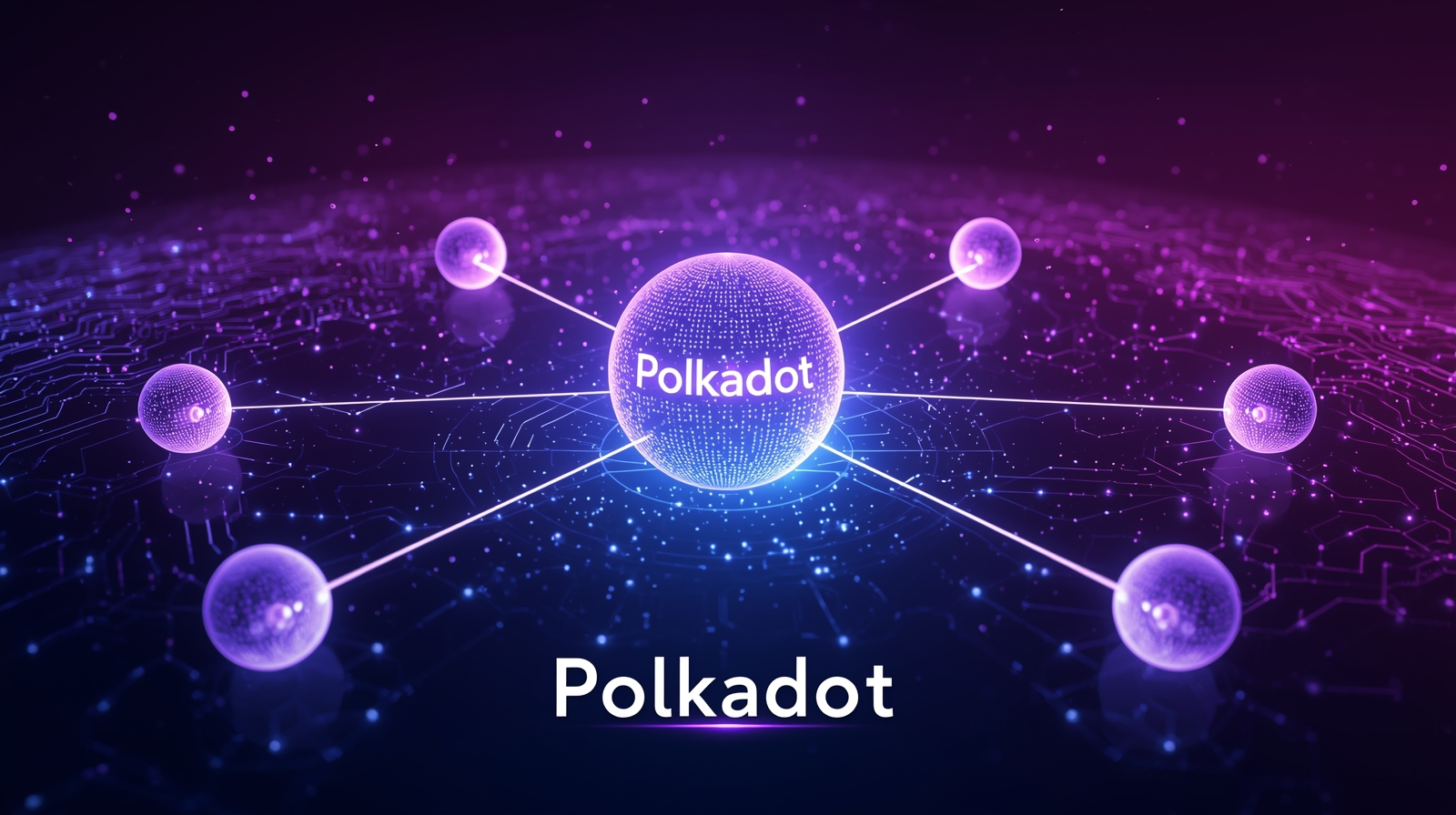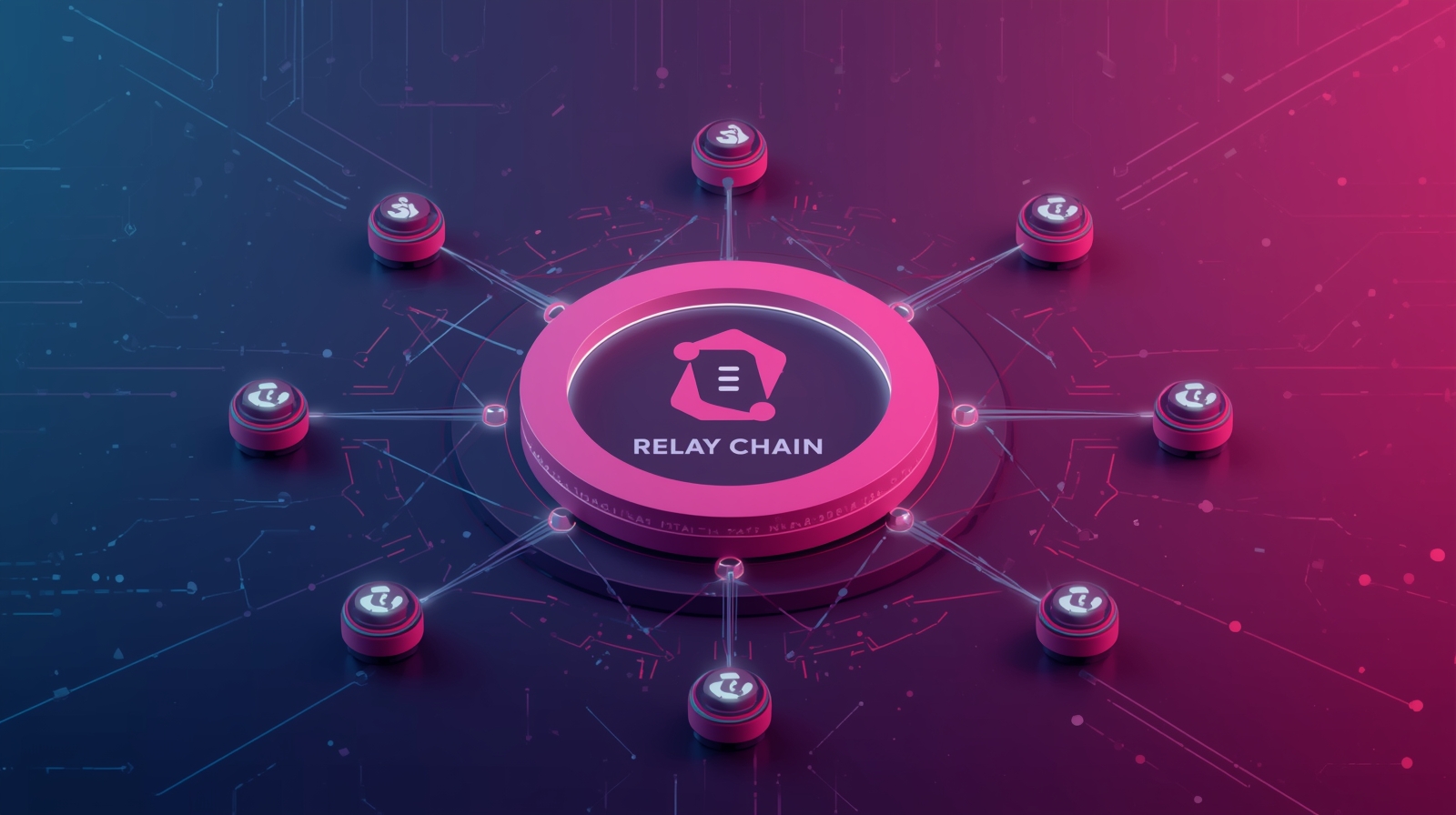
The relay chain forms the structural core. She doesn’t process any Smart Contractsbut manages states, validators and messages. Their consensus mechanism combines two components: BABE for block production and GRANDPA for finality. This creates a stable block sequence that is finalized deterministically. Validators create new blocks while Collators collect transactions within their parachain and forward them to the Relay Chain.
Components at a glance
| level | function | Example |
| Relay Chain | Consensus, governance, finality | Core network |
| Parachains | Specialized blockchains with their own state | Acala, Moonbeam |
| Collators | Block proposals on parachains | Data aggregation |
| The validator | Testing and finalization | Nominated Proof-of-Stake |
| Bridges | Connections to external networks | Ethereum or Bitcoin bridge |
Parachains have their own logic and data model. They are defined via so-called runtimes, which are compiled in WebAssembly format. This allows maximum flexibility: financial protocols, identity frameworks or infrastructure applications can each implement their own rules without changing the global consensus mechanism.
Security: One validator set for the entire system
Polkadot uses Nominated Proof-of-Stake (NPoS). DOT holders nominate validators to participate in consensus via staked tokens. The validator set not only secures the relay chain, but also all parachains. This principle of Shared Security makes the system more efficient than classic multichain models, in which each blockchain has to build its own safety net.
Validators verify parachain blocks, aggregate evidence, and confirm states on the relay chain. Misbehavior leads to Slashinga partial confiscation of the stake. Economic security does not come from hash power, but from financial incentives. This model combines high security with energy efficiency and scalable governance.
Communication: XCM and cross-chain coordination
To ensure that parachains do not work in isolation, Polkadot uses the communication protocol XCM (Cross-Consensus Messaging). XCM is not a single channel, but a language that allows different chains to exchange messages. The transport takes place via XCMP (Cross-Chain Message Passing)which forwards message packets between parachains without using external bridges.
This architecture enables complex processes: a transaction on chain A can transmit data to chain B, where an action is triggered, the result of which is in turn stored on chain C. Everything happens within the framework of consensus, without central intermediaries. This means that the integrity of the processes remains cryptographically secured.
Resource Management: From Slot Auction Model to Agile Coretime
The first version of the system was based on parachain auctions. Projects had to Buy DOT and bind to get a slot for a certain term. The model was stable but capital intensive. With Agile Coretime this structure was replaced.
Coretime describes computing time on the relay chain that projects can purchase and use flexibly. Instead of a long-term lease, resources are now allocated dynamically. This creates variable usage patterns that improve network utilization and provide access for smaller teams.
Comparison of models
| criterion | The Slot Auction | Agile Coretime |
| Allocation | Fixed leasing period | Time-based usage |
| Capital commitment | DOT bonding required | Payment per unit |
| Access | Only for large projects | Open, scalable |
| Efficiency | Resources are often tied up | Flexible allocation |
Agile Coretime makes Polkadot more dynamic. Computing power can be booked and released like network capacity. The relay chain distributes loads more efficiently, while projects do not have to commit long-term capital.
Governance: Decisions in Code
Polkadot controls itself. Governance processes are fully running On-Chain away. The system OpenGov replaces central bodies with a multi-stage referendum system. Each suggestion – whether a parameter change, term upgrade or treasury payout – is handled in its own voting track.
DOT holders can participate directly or delegate their voting rights. Higher risk tracks require longer durations and higher quorums, while smaller changes are implemented more quickly. Upgrades occur via runtime renewals without hard forks. This keeps the network consistent even if the logic changes.
The Treasury acts as a funding body for projects that promote the technical progress of the network. Funds are allocated via governance decisions and are fully documented on-chain.
Token mechanics: DOT as a control and security instrument
DOT is the central resource in the system. It controls governance, staking and the allocation of core time. Through Staking Validators and nominators secure the network and receive rewards from inflation. There is no fixed upper limit; the annual inflation rate is around ten percent, adjusted for the staking participation.
Validators with active stake participate in the BABE/GRANDPA consensus, while nominators delegate their tokens. Incorrect blocks or duplicate signatures result in slashing events. The economic structure forces all actors to behave correctly. At the same time, DOT remains the instrument for controlling system parameters through governance mechanisms.

Applications and ecosystem
Polkadot is now a functioning multichain network with dozens of productive parachains. Form in the DeFi segment Acala and Parallel Finance Liquidity and credit markets. Moonbeam adds full EVM compatibility to Polkadot, allowing Ethereum smart contracts to be ported directly. The KILT-Protocol implements an identity system for verifiable credentials. In the industrial environment, energy and logistics projects use parachains to store supply chain data in a tamper-proof manner.
All of these applications are built on the same foundations: relay security, XCM communications, and scalable resource management. The common validator set ensures that attacks on individual parachains would also affect the entire network – a strong incentive for clean implementation and reliable performance.
Further development: From Polkadot 1.0 to JAM
With Polkadot 1.0 the architecture was stabilized. The next step is called JAM (Join-Accumulate Machine). This framework replaces monolithic relay logic with a more flexible, module-based system. The goal is to allocate computing resources more granularly and further increase parallelism.
JAM allows validators to take on tasks dynamically rather than validating statically assigned parachains. This reduces idle time and increases the overall throughput of the network. At the same time, compatibility with existing parachains is maintained because JAM is based on the same communication standards.
At the same time, XCM v4 developed that can transport messages between different consensus systems. This makes Polkadot not only internally interoperable, but also externally connectable – a step towards a protocol that blockchains like EthereumCosmos and Substrate-based chains can be connected natively.
Polkadot News
Polkadot is preparing for crucial months: The JAM upgrade is intended to replace the previous relay chain with a modular, RISC-V-based system by December 2025. Goal: up to 143,000 transactions per second and gasless executions. At the same time, native Solidity support will start on Kusama in October and on Polkadot in December – a direct incentive for Ethereum developers.
Institutional interest is also growing: T. Rowe Pricelists DOT in new $1.68 trillion ETF, while SEC decisions on Grayscale and 21Shares ETFs are postponed until November 8, 2025. In Europe, the cooperation with the Politecnico di Milano strengthens Polkadot’s position in regulatory and enterprise applications, especially in the area tokenized assets.








No Comments